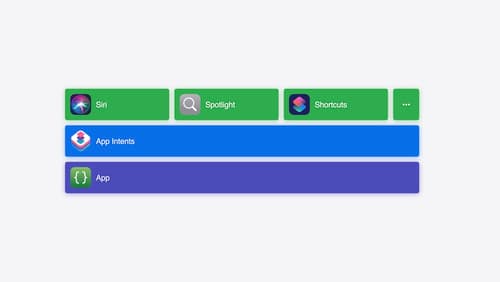What are some modern ideas for updating an iOS app?
Asked on 2024-09-10
1 search
To update an iOS app with modern ideas, you can consider the following suggestions based on the latest features and improvements presented at WWDC:
-
Adopt New UIKit Features: Utilize the new UIKit features available in iOS 18, such as improved transitions and animations, updated tab bars, and the new document launch experience. Experiment with integrating both UIKit and SwiftUI in your app. For more details, you can refer to the session What’s new in UIKit.
-
Customize App Icons and Widgets: iOS 18 introduces the ability to customize app icons and widgets with light, dark, or tinted variants. This ensures a consistent visual experience across the home screen. You can customize each version of your app icon to maintain design intent and legibility. More information can be found in the session Platforms State of the Union.
-
Enhance Feature Discovery with TipKit: Use TipKit to create custom tips with appearances and behaviors that enhance feature discovery in your app. Sync these tips across devices using CloudKit to improve user experience. For more insights, see the session Customize feature discovery with TipKit.
-
Update to StoreKit 2: If your app uses in-app purchases, consider updating to StoreKit 2, which offers improvements like automatic cryptographic validation and modern language features such as Swift's async/await pattern. This update is crucial as the original API is deprecated in iOS 18. Learn more in the session What’s new in StoreKit and In-App Purchase.
-
Leverage App Intents: Bring your app’s core features to users with App Intents, allowing them to interact with your app's features directly from the home screen, lock screen, or control center. This can streamline user interactions and enhance the overall experience. For more details, refer to the session Bring your app’s core features to users with App Intents.
By adopting these modern ideas, you can ensure your iOS app is up-to-date with the latest technologies and provides a seamless and engaging user experience.

Bring your app’s core features to users with App Intents
Learn the principles of the App Intents framework, like intents, entities, and queries, and how you can harness them to expose your app’s most important functionality right where people need it most. Find out how to build deep integration between your app and the many system features built on top of App Intents, including Siri, controls and widgets, Apple Pencil, Shortcuts, the Action button, and more. Get tips on how to build your App Intents integrations efficiently to create the best experiences in every surface while still sharing code and core functionality.

Platforms State of the Union
Discover the newest advancements on Apple platforms.

Enhanced suggestions for your journaling app
Find out how your journaling app can display journaling suggestions with richer content from the system. Explore new types of available content like state of mind data, reflection prompts, and support for third-party media content and motion-based activities.
